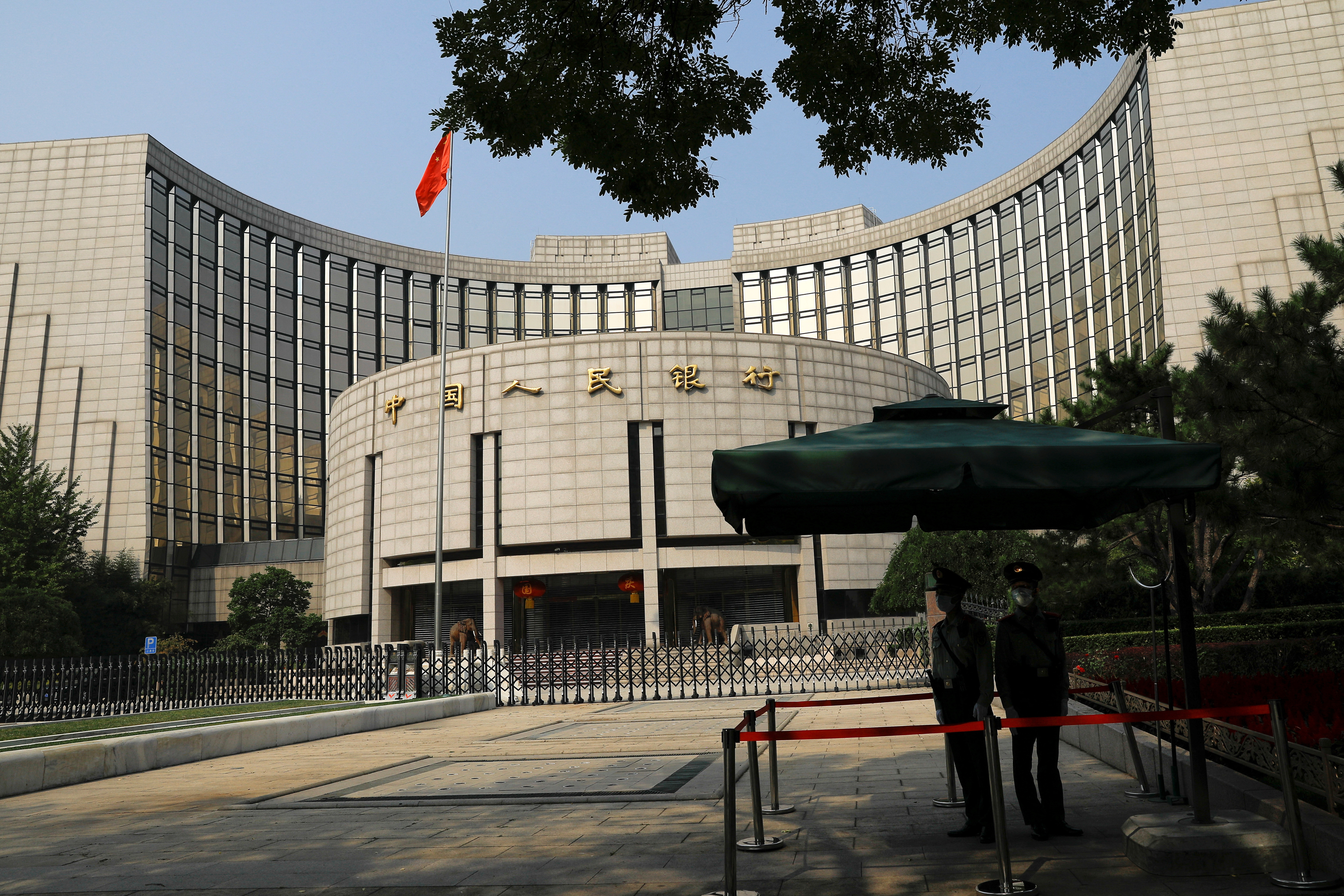
Paramilitary police officers stand guard in front of the headquarters of the People’s Bank of China, the central bank (PBOC), in Beijing, China September 30, 2022. REUTERS/Tingshu Wang/File Photo Acquire Licensing Rights
SHANGHAI/SINGAPORE, Nov 20 (Reuters) – China left benchmark lending rates unchanged at a monthly fixing on Monday, matching expectations, as a weaker yuan continued to limit further monetary easing and policymakers waited to see the effects of previous stimulus on credit demand.
Recent data shows the recovery in the world’s second-largest economy remains patchy with industrial output and retail sales surprising on the upside but deflation gathering pace and few signs the struggling property market will bounce back any time soon.
While the economy still needs more policy stimulus, an escalation of monetary easing would add unwanted downside pressure on the Chinese currency.
The one-year loan prime rate (LPR) was kept at 3.45% and the five-year LPR was unchanged at 4.20%.
Most new and outstanding loans in China are based on the one-year LPR, while the five-year rate influences the pricing of mortgages.
In a poll of 26 market watchers conducted last week, all participants predicted no change to either the one-year or five-year LPR.
The steady fixings came after the central bank kept its medium-term interbank liquidity rate unchanged last week. The one-year LPR is loosely pegged off the medium-term lending facility (MLF) and market participants typically see changes in the MLF rate as a precursor to adjustments in the LPR.
The PBOC injected 1.45 trillion yuan worth of one-year MLF loans into the banking system last week but kept the rates on those loans unchanged.
The liquidity boost resulted in a net 600 billion yuan of cash injections into the banking system, the biggest monthly increase since December 2016.
“Policymakers may want more time to access the impact of the recent repricing of existing mortgage contracts before they make further changes to the benchmark rate,” Julian Evans-Pritchard, head of China economics at Capital Economics, said in a note released before the LPR fixing.
“The big picture though is that, with economic momentum weak and downward pressure on the renminbi reversing, we think rate reductions will come before long,” he said, expecting China to lower the lending benchmark by 20 basis points at the end of the first quarter next year.
China’s yuan has clawed back some of its year-to-date losses after losing more than 6% against the dollar at one point in September.
China remains an outlier among global central banks, having loosened monetary policy to shore up a faltering recovery but further rate cuts would widen the yield gap with the United States, risking yuan depreciation and capital outflows.
The LPR, which banks normally charge their best clients, is set by 18 designated commercial banks who submit proposed rates to the central bank every month.
Reporting by Winni Zhou and Tom Westbrook. Editing by Sam Holmes
: .


